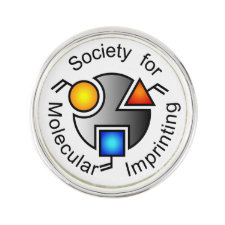
Authors: Sharma S, Balasubramanian K
Article Title: Molecularly imprinted and nanoengineered camphor soot functionalized PAN-nanofibers for effluent treatment.
Publication date: 2015
Journal: RSC Advances
Volume: 5
Issue: (40)
Page numbers: 31732-31741.
DOI: 10.1039/C5RA02861B
Abstract: A novel platform for the synthesis of ion-imprinted electrospun PAN-camphor soot nanofibers for the speciation and treatment of radioactive metal ions is proposed. The electrospinning technique is used for the synthesis of PAN nanofibers decorated with carbon nanoparticles (CNPs) of camphor soot, derived from combustion of camphor. The amount of Th(IV) ions adsorbed on the PAN-CS nanofibers was influenced by parameters like the camphor soot dosage, pH selectivity, and dosage of nanofibers. Extending the contact time resulted in enhancing the adsorption capacity of the PAN-CS nanofibers, after 120 minutes equilibrium is attained and a 93% adsorption capacity was observed at pH 7. BET analyses revealed, there is an increase in surface area of the PAN nanofibers from 12.1 to 14.56 m2 g-1, by incorporating camphor soot into the matrix. Various adsorption isotherms and kinetics models were studied in order to fathom the process and rate of adsorption. The results derived from the regression coefficient values, and the process of adsorption of the Th(IV) ions were in good agreement with the Dubinin-Radushkevich isotherm model and the pseudo-second-order kinetics with a maximum adsorption capacity of qmax = 455.5 mg g-1. The thermodynamic parameters reveal high endothermicity and spontaneity of the process. Characterization of the PAN-CS nanofibers was executed by Field emission scanning electron microscopy (FESEM), the Brunauer-Emmett-Teller (BET) method, and X-ray diffraction (XRD). The studies concluded that the adsorbent loaded with Th(IV) remains regenerable and reusable after four adsorption-desorption cycles, with 97% effective desorption
Template and target information: thorium ion, Th(IV)



Join the Society for Molecular Imprinting

New items RSS feed
Sign-up for e-mail updates:
Choose between receiving an occasional newsletter or more frequent e-mail alerts.
Click here to go to the sign-up page.
Is your name elemental or peptidic? Enter your name and find out by clicking either of the buttons below!
Other products you may like:
 MIPdatabase
MIPdatabase









